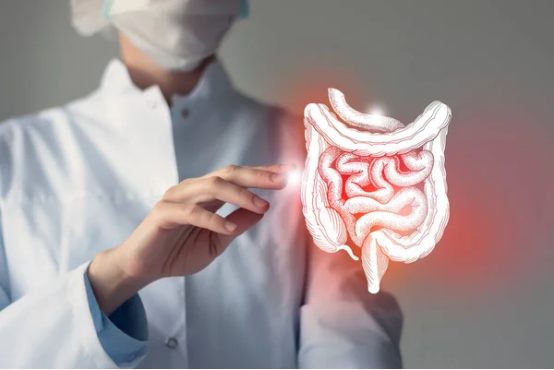Understanding Crohn’s Disease: Essential Steps in Differential Diagnosis
Crohn’s disease (CD) is a chronic inflammatory condition of the gastrointestinal (GI) tract, classified under the umbrella of inflammatory bowel diseases (IBD).
Crohn’s disease (CD) is a chronic inflammatory condition of the gastrointestinal (GI) tract, classified under the umbrella of inflammatory bowel diseases (IBD).
It is characterized by inflammation that can affect any part of the GI tract, from the mouth to the anus, although it most commonly involves the ileum (the end of the small intestine) and proximal colon. The exact cause of Crohn’s disease is still unknown, but it is believed to result from a combination of genetic factors, immune system abnormalities, and environmental triggers.

The diagnosis of Crohn's disease is complex and involves a differential diagnosis process. This process aims to distinguish Crohn’s disease from other conditions that may present with similar symptoms. Early and accurate diagnosis is crucial to initiate appropriate treatment and manage the disease’s complications effectively.
1. Clinical Presentation of Crohn's Disease
Crohn’s disease presents with a variety of symptoms that can mimic several other gastrointestinal disorders. The primary symptoms include:
- Abdominal pain: Often crampy or colicky, typically in the lower right abdomen.
- Chronic diarrhea: This can be watery, blood-streaked, or mucus-laden.
- Weight loss: Due to malabsorption, poor appetite, and frequent diarrhea.
- Fatigue: Resulting from ongoing inflammation, nutritional deficiencies, or anemia.
- Fever: Common during active flare-ups.
- Rectal bleeding: Though less common in Crohn's than in ulcerative colitis, blood in the stool can occur.
- Extra-intestinal manifestations: These can include skin rashes, joint pain (arthritis), eye inflammation (uveitis), or liver disease (e.g., primary sclerosing cholangitis).
Given the overlap with other diseases that cause similar gastrointestinal symptoms, a thorough differential diagnosis is needed.
2. Steps in the Differential Diagnosis of Crohn’s Disease
A. Patient History
The first step in diagnosing Crohn’s disease is obtaining a comprehensive patient history. Key aspects to explore include:
- Symptom duration and pattern: Crohn’s disease often follows a relapsing-remitting course, with periods of flare-ups followed by symptom-free intervals.
- Family history: A positive family history of Crohn’s disease or other autoimmune conditions such as ulcerative colitis, rheumatoid arthritis, or psoriasis can increase suspicion for IBD.
- Environmental triggers: Consider exposure to factors like smoking, diet, or medications, which may influence disease onset and exacerbation.
- Extra-intestinal manifestations: These can point to a diagnosis of IBD and may help differentiate Crohn’s disease from other conditions like irritable bowel syndrome (IBS) or infections.
B. Physical Examination
A detailed physical examination is essential. Abdominal tenderness is common, particularly in the lower right quadrant due to ileal involvement. Signs of malnutrition, weight loss, or anemia may be evident in long-standing cases. The presence of perianal disease (such as abscesses, fistulas, or skin tags) can also strongly suggest Crohn’s disease, as these are more common in Crohn’s than in ulcerative colitis.
3. Key Conditions to Exclude in the Differential Diagnosis
A. Infectious Colitis
Several infections can cause symptoms similar to those of Crohn’s disease, including:
- Gastrointestinal infections: Bacterial infections such as Salmonella, Shigella, Campylobacter, and Clostridium difficilecan mimic the symptoms of IBD, particularly during an acute flare-up.
- Parasitic infections: Parasites such as Entamoeba histolyticaor Giardia lamblia may cause diarrhea and abdominal discomfort.
- Viral infections: Cytomegalovirus (CMV)can cause colitis in immunocompromised patients, presenting similarly to IBD.
To differentiate between Crohn’s disease and infectious causes, stool cultures, and tests for Clostridium difficile toxin and other pathogens should be performed.
B. Irritable Bowel Syndrome (IBS)
Irritable bowel syndrome (IBS) shares symptoms like abdominal pain and diarrhea with Crohn’s disease, but it lacks the inflammatory component and the risk of complications such as strictures or fistulas seen in Crohn’s.
Key differences:
- IBS is a functional disorder, meaning there’s no underlying tissue damage or inflammation, while Crohn’s disease involves chronic inflammation of the GI tract.
- In Crohn’s disease, symptoms persist and progressover time, whereas IBS often fluctuates and can improve with lifestyle or dietary changes.
A normal colonoscopy and absence of inflammation markers in IBS patients help distinguish it from Crohn’s disease.
C. Celiac Disease
Celiac disease, an autoimmune disorder triggered by gluten, can present with chronic diarrhea, malabsorption, and weight loss, resembling Crohn’s disease. Key differences include:
- Response to a gluten-free diet: In celiac disease, symptoms improve on a gluten-free diet.
- Serologic tests: Elevated levels of anti-tissue transglutaminase (tTG) antibodiesor anti-endomysial antibodies are diagnostic for celiac disease.
A small bowel biopsy showing villous atrophy and intraepithelial lymphocytes is the gold standard for diagnosing celiac disease.
D. Colorectal Cancer
In older adults, colorectal cancer may present with chronic diarrhea, weight loss, and abdominal discomfort, which can be mistaken for Crohn’s disease. A colonoscopy with biopsy is crucial to exclude malignancy.
Key differences:
- Colorectal cancertypically presents with progressive symptoms, such as blood in the stool or changes in bowel habits, and may not exhibit the typical pattern of inflammation seen in Crohn’s disease.
- Colonoscopyand biopsy help to differentiate between these conditions, as Crohn’s disease shows discontinuous, transmural inflammation, while colorectal cancer typically shows mass lesions and ulceration.
E. Tuberculosis (TB) Colitis
In regions where tuberculosis is endemic, tuberculosis (TB) colitis can mimic Crohn’s disease, causing similar abdominal pain, weight loss, and diarrhea. A key distinction is that TB colitis often presents with granulomas, similar to Crohn’s disease, but it may also present with non-caseating granulomas in a way that can overlap with Crohn’s.
Key diagnostic tests include:
- Tuberculin skin test (TST)and interferon-gamma release assays (IGRAs) to assess for TB infection.
- Acid-fast bacilli (AFB) stainingand mycobacterial cultures of tissue samples can confirm TB.
F. Other Autoimmune Disorders
Several autoimmune diseases can present with gastrointestinal symptoms similar to Crohn’s disease:
- Systemic lupus erythematosus (SLE): Can cause lupus enteritis, which presents with abdominal pain and diarrhea.
- Behçet’s disease: May cause mouth ulcers, genital ulcers, and gastrointestinal symptoms that mimic Crohn’s disease.
- Scleroderma: Can cause dysmotility of the GI tract and similar abdominal complaints.
These conditions typically have additional characteristic features that help with diagnosis, such as skin manifestations in lupus or oral ulcers in Behçet’s disease.
4. Key Diagnostic Tests for Crohn’s Disease
Once infectious, neoplastic, and other causes are excluded, the following tests help to confirm a diagnosis of Crohn’s disease:
A. Blood Tests
- C-reactive protein (CRP): Elevated in active inflammation and often elevated in Crohn’s disease.
- Erythrocyte sedimentation rate (ESR): Often elevated during flare-ups of Crohn’s disease.
- Complete blood count (CBC): Anemia may be present due to chronic inflammation, malabsorption, or bleeding.
- Serologic tests: Anti-Saccharomyces cerevisiae antibodies (ASCA) and perinuclear anti-neutrophil cytoplasmic antibodies (p-ANCA) may help in distinguishing between Crohn’s disease and ulcerative colitis.
B. Endoscopy and Imaging
- Colonoscopy with biopsy: The gold standard for diagnosing Crohn’s disease. It allows for direct visualization of the mucosa, revealing skip lesions(areas of healthy tissue interspersed with inflamed regions), cobblestone appearance, and deep ulcerations. Biopsies can confirm the diagnosis by showing non-caseating granulomas.
- Capsule endoscopy: Useful in evaluating areas of the small intestine that are not accessible by colonoscopy.
- CT enterography or MRI enterography: These imaging techniques provide detailed views of the bowel and can help detect complications such as strictures, fistulas, and abscessesin patients with known or suspected Crohn’s disease.
Conclusion
The differential diagnosis of Crohn’s disease requires a careful and systematic approach to exclude other conditions that present with similar symptoms. By combining patient history, physical examination, laboratory tests, and imaging studies, healthcare providers can accurately differentiate Crohn’s disease from conditions like IBS, celiac disease, infectious colitis, and colorectal cancer. Early and accurate diagnosis is crucial for effective treatment and management, helping patients with Crohn’s disease lead healthier lives and avoid complications








